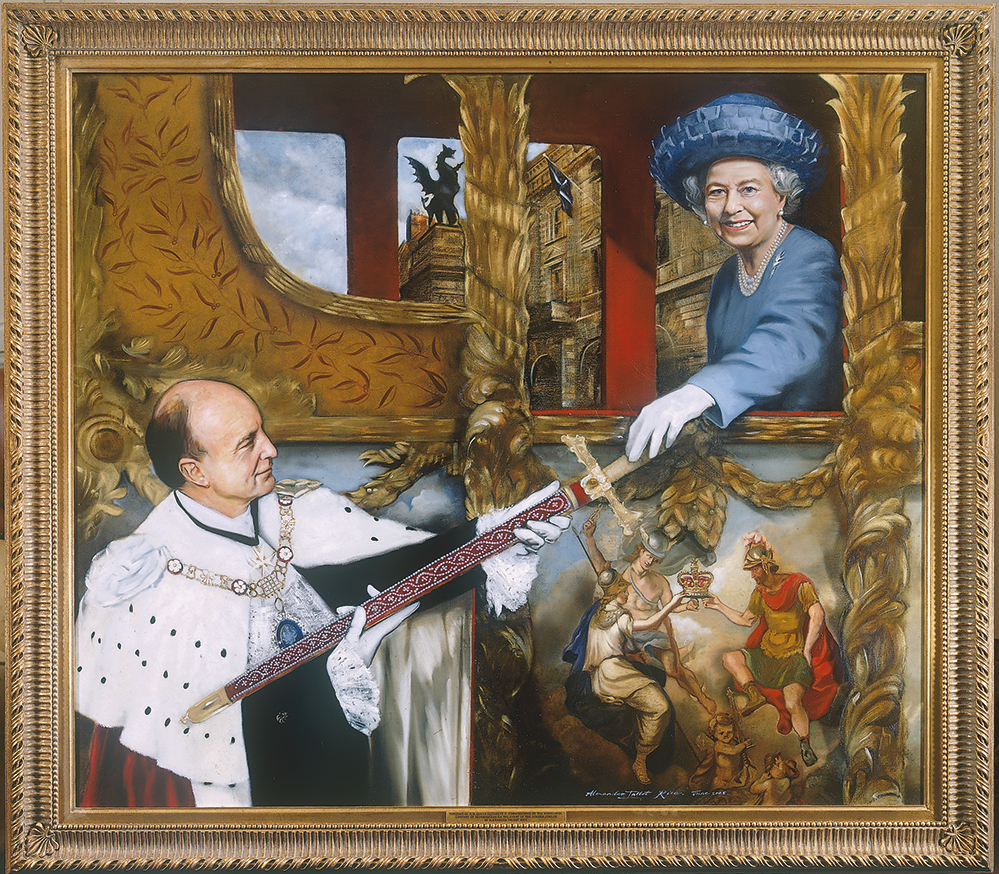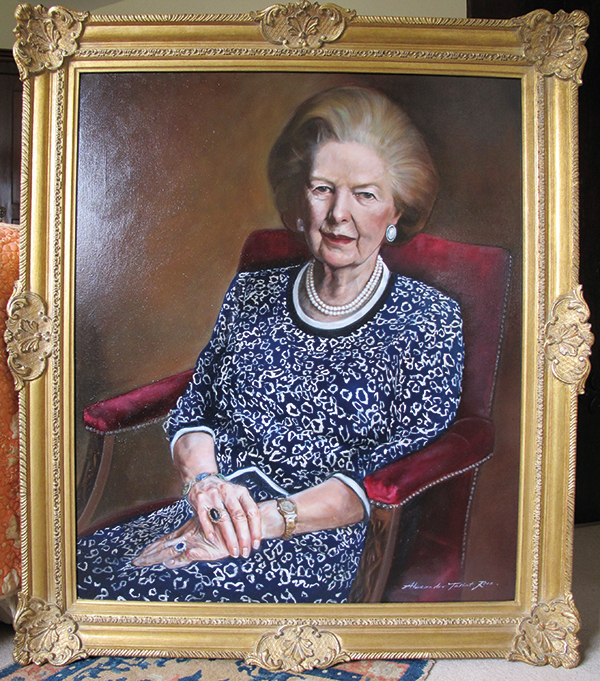Portrait Artist Alexander Talbot Rice Strives to Capture Beauty Over Time
Aug 12, 2016

If the eyes are the window to the soul, then Alexander Talbot Rice’s eyes betray a ravenous soul, his gaze absorbing every detail around him. Talbot Rice’s gaze has recently fallen on Hong Kong, where he is undertaking a project for the Hong Kong Jockey Club. Through his skill as a raconteur, the British artist illustrates why his talent for portraiture is so sought after by royalty and leading figures in the worlds of religion, the arts, business and politics.
In an age of instant gratification, painting society portraits may seem a quaint occupation, and sitting for them a touch idiosyncratic. Why sit for hours to have one’s picture painted when a mobile phone can snap scores of selfies in a few minutes? Why seek to show the world one’s best side, represented in slow-drying paint, in an era when authenticity, as conveyed instantly by reality television, is most prized? “At this moment in history, when our ability to communicate is easier than ever before, so many of us feel so disconnected from one another,” says Talbot Rice. “One of the roles that art has is to bridge that gap. A lot of us artists still live in that world that is disconnected from modern technology.”
Talbot Rice gained his status in the world of art in a manner at once classical and romantic. An art teacher stoked Talbot Rice’s interest in painting and, after university, the painter moved to Italy to study art. There he attended the Florence Academy of Art by day and slept in a church at night. While in Florence, his work on a war memorial for soldiers killed in the Allied liberation of the city during the Second World War brought him in contact with a Florentine princess. The princess invited Talbot Rice to be artist-in-residence in her palace and he readily abandoned his austere sleeping quarters for something rather grander.
His gumption took him to Russia, where he studied at the Repin Institute of Arts in the former Russian Academy of Arts building in St Petersburg. “I had heard about this art institute in St Petersburg, which has an almost mythical status for artists, and everyone at the time was talking about art at the Repin academy, but no one had been there,” he says. “So I thought I would go there and learn.”
He went straight to the director of the academy and asked to enrol. The director asked him which of the masters he would like to study. “I said, ‘Well, can I see their work please?’ ” Talbot Rice says. “I had no idea how arrogant I was being.” But his brazenness gained him admission to the academy.

Since then, Talbot Rice has risen to become one of the most renowned portrait artists of our times. He has done portraits of Queen Elizabeth, Pope Benedict and the late Baroness Thatcher, the former prime minister of Britain. Talbot Rice wins commissions not only because of his talents as a painter but also because of the respect he shows his subjects.
“When you’re painting somebody, it’s an incredibly intimate thing. Right off the bat, you feel a bit self-conscious or shy,” he says. “The intimacy I have with my subjects is something I try hard to maintain. I try hard not to jeopardize their trust in me.”
How does a portraitist satisfy a patron’s wishes while maintaining his self-respect as an artist? “There’s always a conflict there between beautifying the subject and having artistic integrity, but a good artist should be able to create a composition that makes the subject look good, and I have yet to meet a human subject who isn’t interesting. We’re all so complex. Anytime you’re painting someone, you should look within yourself to try to identify with them.”
Talbot Rice is not concerned by the prospect of photography and technology replacing the art of painting portraits. “What I’ve been doing is building a relationship through the many times of meeting that person, in order to capture the essence of them through a picture, whereas a photograph is just that one moment,” he says.
“In many respects, a photographer has to be much more talented than me if they can capture that subject in just one moment. But when you look at the picture I’ve done, you’re seeing all sorts of particulars about that person: the way their head tilts, the naughty glint in their eyes.”
Love of his art and respect for his subjects have brought Talbot Rice a long way. While commissions are still his bread and butter, working for good causes is the icing on his cake. In addition to the Hong Kong Jockey Club, he also has present or future projects with Russia’s Mariinsky Ballet, Britain’s Prince Harry and The Hub Hong Kong, for its charity ball.
“I’ve been really lucky, and have painted a lot of interesting people,” he says. “But as I have resources to do bigger things, I can actually use it as an opportunity to change people’s lives. And that’s the whole point, isn’t it? Nobody wants to end up being the richest person in the graveyard. What you really want to do is leave something behind that makes a difference.”

Talbot Rice says he would relish the challenge of painting figures such as Xi Jinping, Vladimir Putin and Pope Francis – to name a trio at the top of his list. “I’d love to really sit down with them and capture an essence of who they are in the picture,” he says. “So let’s put that out there and see what comes of it.” He will consider all suggestions.
“I imagine that my stuff will become increasingly risqué as time goes on. Someone in Moscow asked me if I had ever done a nude ballerina, and I said, ‘Nope, but I am completely open to that.’ ”
As his horizon’s shift, the artist is now looking further beyond the shores of Britain, his gaze shifting towards Russia, mainland China and Hong Kong. “Hong Kong is thirsty for fine art and it’s funny, to me, that China, with all its billions of people, their best artist is Ai Wei Wei,” Talbot Rice says. “No offence, but to paint something dark and controversial is a cheap shot. To create something beautiful in this world is what’s truly difficult.”
Creating something beautiful is just the sort of challenge Talbot Rice relishes. It is the sort of challenge he confronts with all the brazenness his spirit can muster and all the talent his hand can wield.





























